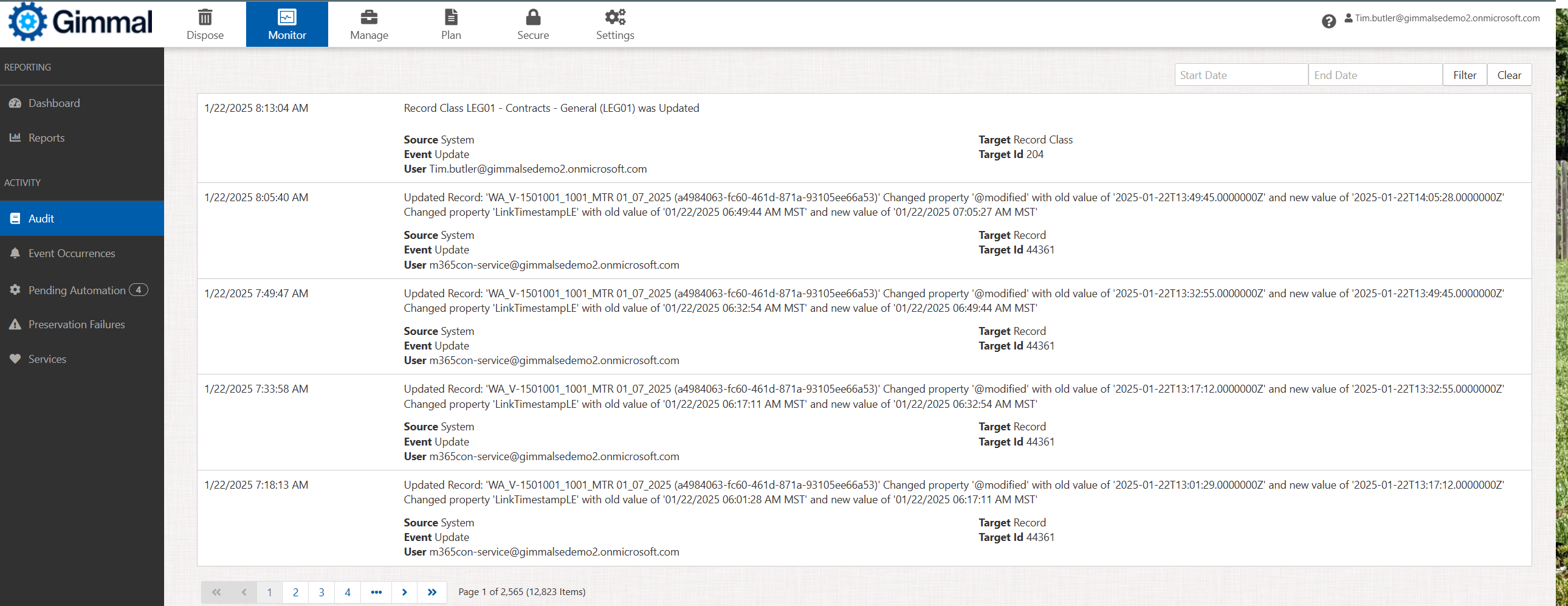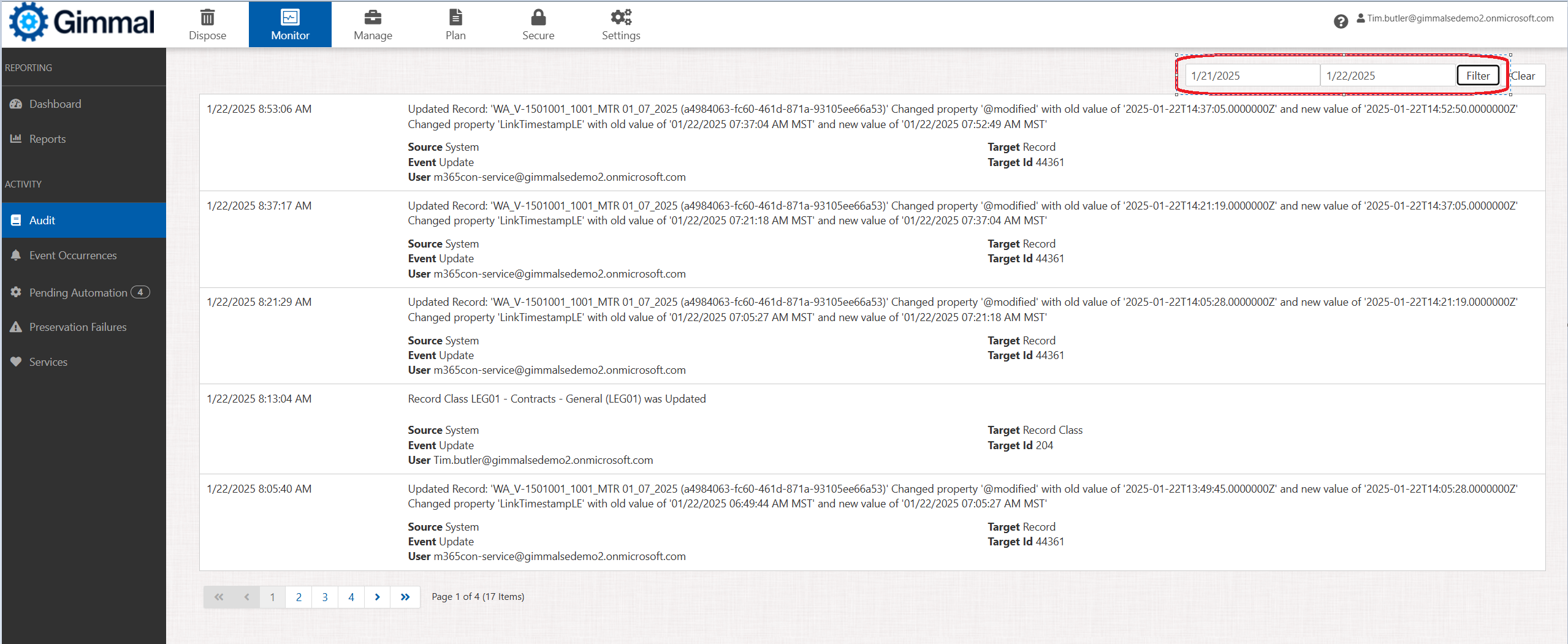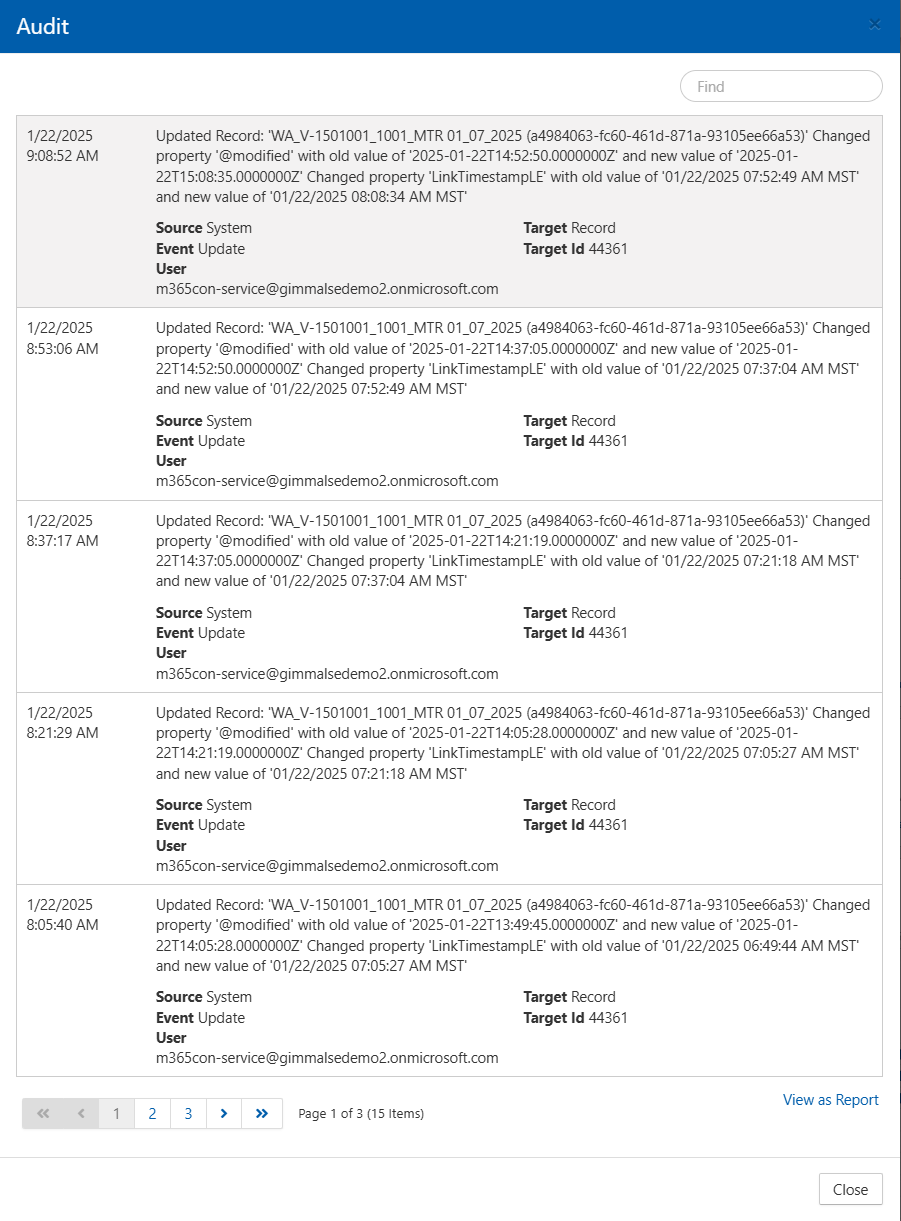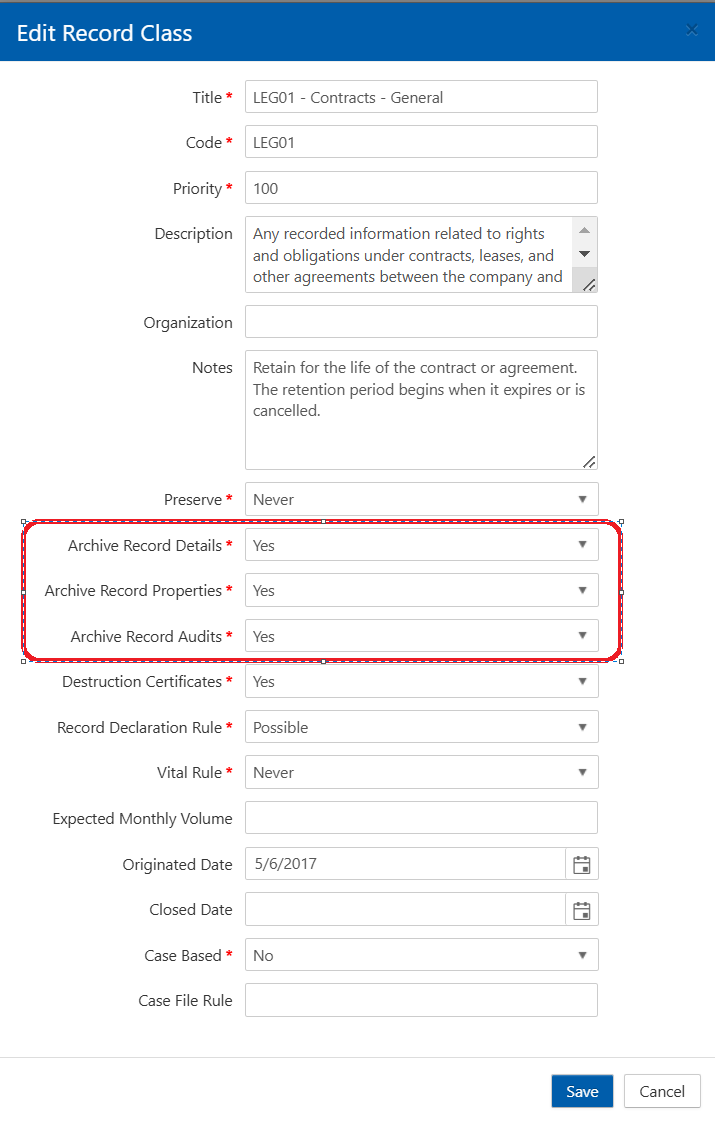Audit Trails
Audit trails maintain a permanent, immutable record of activity. Within a computer system, they record actions taken, the date and time they happened, an indication of who performed them, and additional details about each action. Useful for analyzing what led to the current state of the system or an individual record, and mandatory for demonstrating compliance with various industry regulations, they are the “smoking gun” of who did what and when.
Users of Gimmal Records know that once in production, most actions taken within the system are automated. That is, via the configuration of Records Classes, their associated Lifecycles, and Classification Rules, no point-in-time human interaction is necessary. Rather, via repository-specific connectors, records are identified, classified, and advanced through the various stages of their lifecycle.
In spite of all the automation however, some actions are explicit: creation of legal cases or holds, indication of event occurrences, granting of disposition approval, etc.
Gimmal Records provides two separate views into all this activity, or audit trail: one from an overall system perspective and the other specific to individual records.
System View
From the Monitor page, click Audit within the left-hand panel.

As seen, all system activity is displayed and includes:
Date and time stamp
Details of the activity taken
Source of the activity
Type of activity (Event)
Who performed the activity (User)
Type of object modified (Target), and
Unique Id of object modified (Target ID)
Note that you may also filter (by date) the audit trail as desired.

Record View
Available whenever viewing an individual record, simply click Audit from the drop-down menu.

As shown below, the Audit trail specific to that record will be displayed. Note you can filter the audit trail using the ‘Find’ search box, and you can also produce a report via the ‘View as Report’ link in the lower right.

Reports
Native stock reports may also be used to analyze audit trail information. From the Monitor page, click Reports within the left-hand panel. Click the View Report button for either the ‘Record Audit’ or ‘User Audit’ report. Each may be filtered as desired.

Deleted Records
So what happens to all of this audit trail information once a record has progressed through its lifecycle and is destroyed? Well, that is up to you.
Notice below, that each Record Class within the system allows you to choose what subset of records data within that class gets archived:
Record Details (meta-data about the record native to Gimmal Records)
Record Properties (meta-data about the record native to its repository)
Record Audits (audit information maintained by Gimmal Records throughout its lifecycle)

Please contact technical support with any questions.
First published January, 2025
